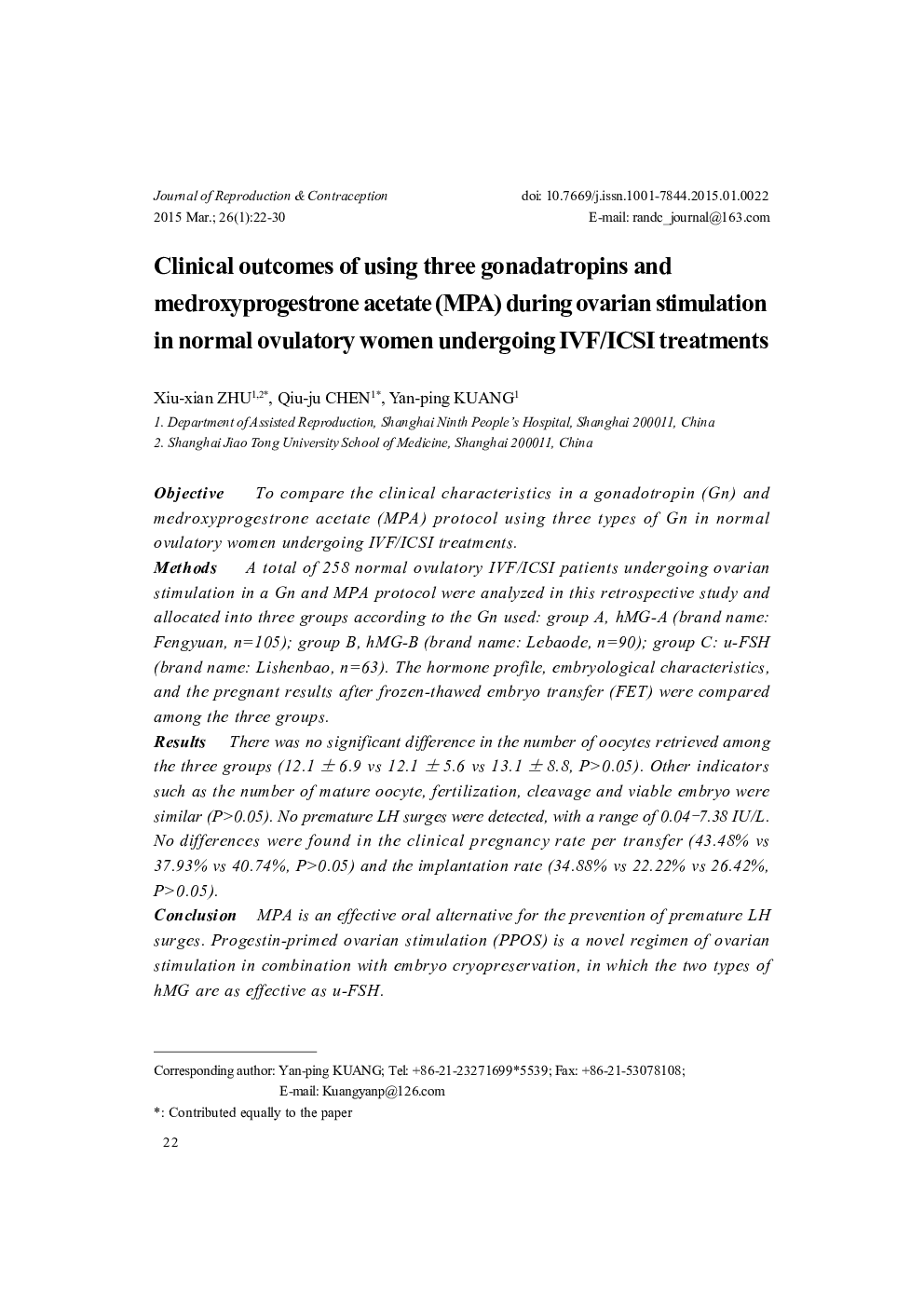| Article ID | Journal | Published Year | Pages | File Type |
|---|---|---|---|---|
| 3960678 | Journal of Reproduction and Contraception | 2015 | 9 Pages |
ObjectiveTo compare the clinical characteristics in a gonadotropin (Gn) and medroxyprogestrone acetate (MPA) protocol using three types of Gn in normal ovulatory women undergoing IVF/ICSI treatments.MethodsA total of 258 normal ovulatory IVF/ICSI patients undergoing ovarian stimulation in a Gn and MPA protocol were analyzed in this retrospective study and allocated into three groups according to the Gn used: group A, hMG-A (brand name: Fengyuan, n=105); group B, hMG-B (brand name: Lebaode, n=90); group C: u-FSH (brand name: Lishenbao, n=63). The hormone profile, embryological characteristics, and the pregnant results after frozen-thawed embryo transfer (FET) were compared among the three groups.ResultsThere was no significant difference in the number of oocytes retrieved among the three groups (12.1 ±6.9 vs 12.1 ±5.6 vs 13.1 ±8.8, P>0.05). Other indicators such as the number of mature oocyte, fertilization, cleavage and viable embryo were similar (P>0.05). No premature LH surges were detected, with a range of 0.04–7.38 IU/L. No differences were found in the clinical pregnancy rate per transfer (43.48% vs 37.93% vs 40.74%, P>0.05) and the implantation rate (34.88% vs 22.22% vs 26.42%, P>0.05).ConclusionMPA is an effective oral alternative for the prevention of premature LH surges. Progestin-primed ovarian stimulation (PPOS) is a novel regimen of ovarian stimulation in combination with embryo cryopreservation, in which the two types of hMG are as effective as u-FSH
